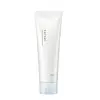What's inside
What's inside
 Key Ingredients
Key Ingredients

 Benefits
Benefits

 Concerns
Concerns

 Ingredients Side-by-side
Ingredients Side-by-side

Talc
AbrasiveSodium Cocoyl Isethionate
CleansingSodium Myristoyl Glutamate
CleansingSodium C14-16 Olefin Sulfonate
CleansingPotassium Laurate
EmulsifyingSodium Lauroyl Glutamate
Carrageenan
Methicone
EmollientIsostearyl Alcohol
EmollientBHT
AntioxidantMoroccan Lava Clay
AbrasiveDipropylene Glycol
HumectantSilk
Ethyl Glucoside
HumectantLactic Acid
BufferingSodium Hyaluronate
HumectantPotassium Hydroxide
BufferingProtease
ExfoliatingLipase
Skin ConditioningMethylparaben
PreservativeIron Oxides
Talc, Sodium Cocoyl Isethionate, Sodium Myristoyl Glutamate, Sodium C14-16 Olefin Sulfonate, Potassium Laurate, Sodium Lauroyl Glutamate, Carrageenan, Methicone, Isostearyl Alcohol, BHT, Moroccan Lava Clay, Dipropylene Glycol, Silk, Ethyl Glucoside, Lactic Acid, Sodium Hyaluronate, Potassium Hydroxide, Protease, Lipase, Methylparaben, Iron Oxides
Glycerin
HumectantMyristic Acid
CleansingWater
Skin ConditioningPotassium Hydroxide
BufferingPalmitic Acid
EmollientPEG-32
HumectantPEG-6
HumectantDipropylene Glycol
HumectantLauric Acid
CleansingGlyceryl Stearate Se
EmulsifyingSodium Methyl Cocoyl Taurate
CleansingMoroccan Lava Clay
AbrasiveKaolin
AbrasiveParfum
MaskingTetrasodium EDTA
Sodium Lauroyl Glutamate
Polyquaternium-7
Sodium Hyaluronate
HumectantPrunus Armeniaca Juice
MoisturisingSodium Benzoate
MaskingEthyl Glucoside
HumectantSalicylic Acid
MaskingGlycerin, Myristic Acid, Water, Potassium Hydroxide, Palmitic Acid, PEG-32, PEG-6, Dipropylene Glycol, Lauric Acid, Glyceryl Stearate Se, Sodium Methyl Cocoyl Taurate, Moroccan Lava Clay, Kaolin, Parfum, Tetrasodium EDTA, Sodium Lauroyl Glutamate, Polyquaternium-7, Sodium Hyaluronate, Prunus Armeniaca Juice, Sodium Benzoate, Ethyl Glucoside, Salicylic Acid
Ingredients Explained
These ingredients are found in both products.
Ingredients higher up in an ingredient list are typically present in a larger amount.
Dipropylene Glycol is a synthetically created humectant, stabilizer, and solvent.
This ingredient helps:
Dipropylene glycol is technically an alcohol, but it belongs to the glycol family (often considered part of the ‘good’ alcohols). This means it is hydrating and gentle on skin unlike drying solvent alcohols like denatured alcohol.
As a masking agent, Dipropylene Glycol can be used to cover the smell of other ingredients. However, it does not have a scent.
Studies show Dipropylene Glycol is considered safe to use in skincare.
Learn more about Dipropylene GlycolWe don't have a description for Ethyl Glucoside yet.
This ingredient is also known as rhassoul clay.
Potassium hydroxide is commonly known as caustic potash. It is used to fix the pH of a product or as a cleaning agent in soap. In cleansers, it is used for the saponification of oils.
Sapnification is the process of creating fatty acid metal salts from triglycerides and a strong base. During this process, Potassium Hydroxide is used up and is not present in the final product.
Using high concentrations of Potassium Hydroxide have shown to irritate the skin.
Learn more about Potassium HydroxideSodium Hyaluronate is hyaluronic acid's salt form. It is commonly derived from the sodium salt of hyaluronic acid.
Like hyaluronic acid, it is great at holding water and acts as a humectant. This makes it a great skin hydrating ingredient.
Sodium Hyaluronate is naturally occurring in our bodies and is mostly found in eye fluid and joints.
These are some other common types of Hyaluronic Acid:
Learn more about Sodium HyaluronateSodium Lauroyl Glutamate is the sodium salt from the lauric acid of glutamic acid.
It is a surfactant and helps cleanse the skin. Surfactants gather oil, dirt, and other pollutants from your skin so they may be washed away easily.